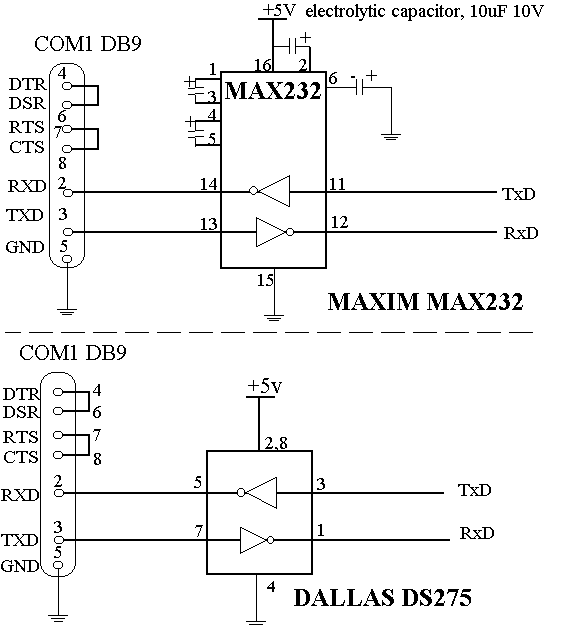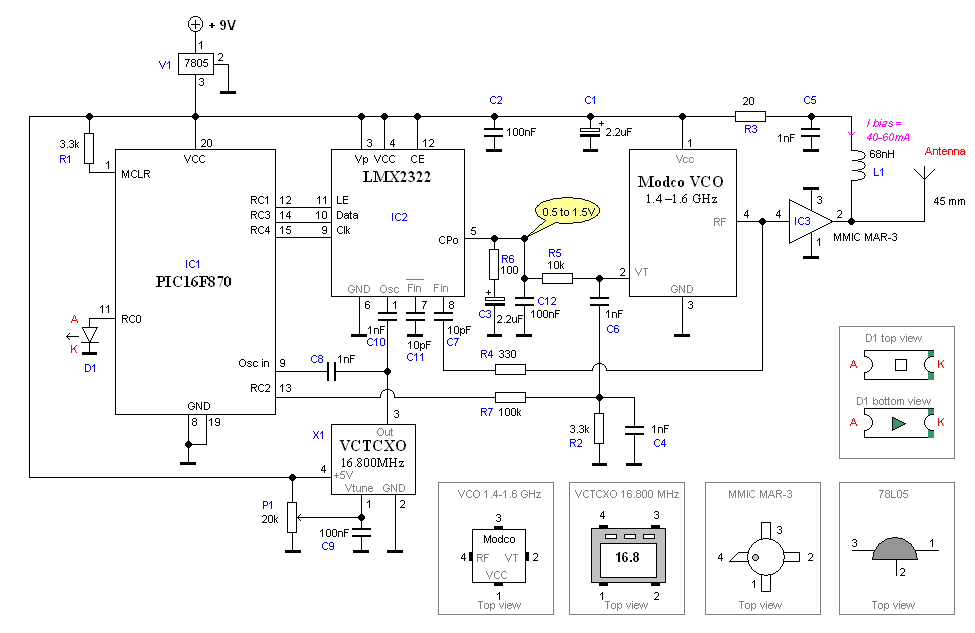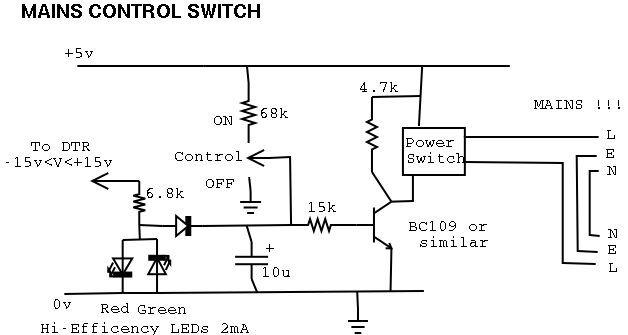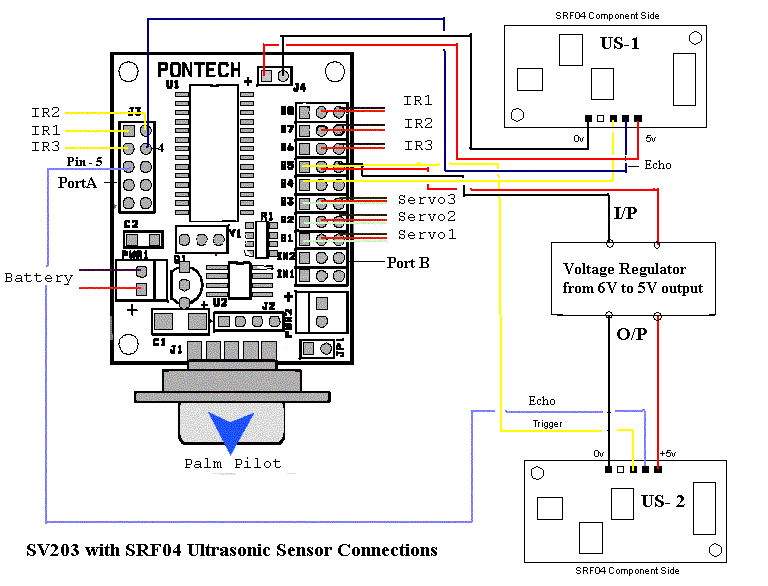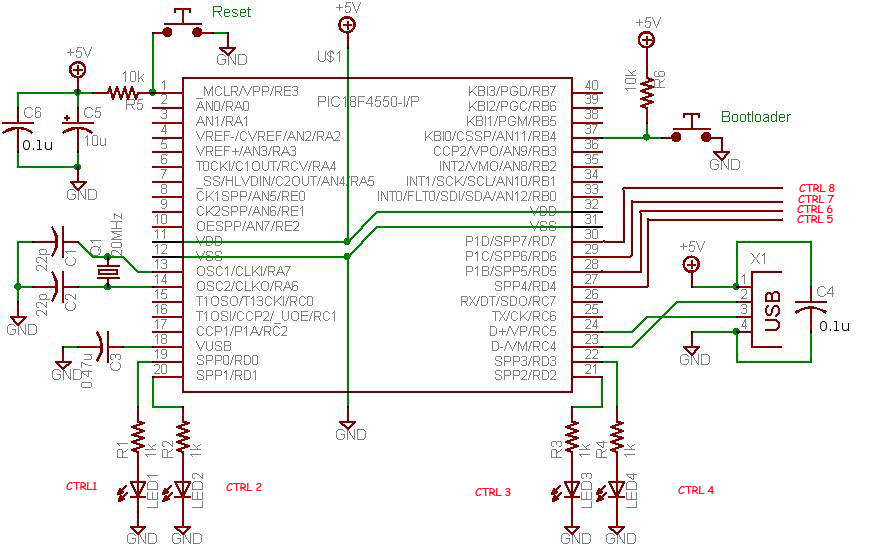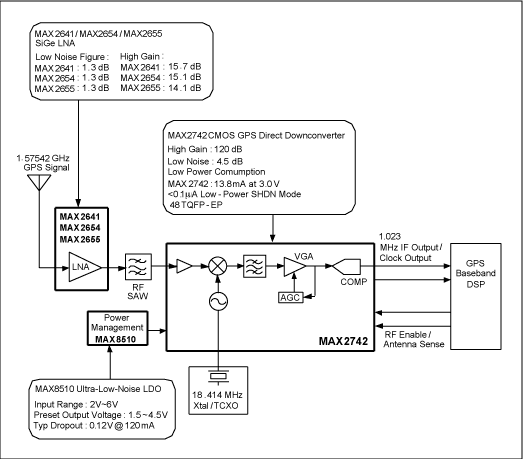
GPS RS232 Dev Board
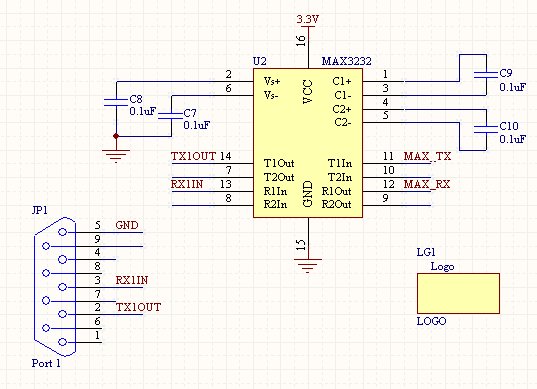
Once the setup of an RS232 connection is understood, it becomes a straightforward process for future projects. This design features a compact SMD version of the power supply, which can also be constructed using through-hole components on a breadboard. The schematic includes a large diode (D3) labeled MBRA140 for reverse polarity protection, capable of handling up to 1A, which prevents damage to the board if a center-negative wall wart is mistakenly connected. It is important to note that this diode introduces a voltage drop of approximately 0.5V from the output of the wall wart. The voltage regulator used is the LM317 (or LM1117 in SMD form), which accepts a higher input voltage and outputs a regulated voltage. The output voltage is determined by two external resistors. R1 is typically set at 240 ohms, while R2 varies depending on the desired output voltage. For this application, R2 is adjusted to 715 ohms to achieve an output of 3.3V. The LM317 is advantageous due to its adjustable nature, and the SOT-223 package allows it to withstand a maximum input voltage of 25V while providing adequate heat dissipation. The J2 component is a two-pin polarized header, which allows for powering other boards from the 3.3V output or for powering this board from other sources without the need for an external wall wart. The schematic also depicts a DB9 connector (D-Sub 9-pin connector), a serial cable, and the MAX3232 IC along with charge pump capacitors (all in SMD, but can be constructed with through-hole components). The MAX232 IC is a common component in embedded systems, with various model names (e.g., ICL232) that serve the same function and typically share identical pin configurations. This IC converts low-voltage signals from microcontrollers (such as PIC or ARM) into higher-voltage signals compatible with computers. Additionally, it manages the inversion of voltage levels between TTL and RS232. The MAX232 receives TTL signals and outputs RS232 signals, while also converting RS232 signals back to TTL for communication with microcontrollers. This conversion is facilitated by charge pump capacitors, specifically four 0.1uF capacitors connected to the MAX3232. It is noteworthy that the MAX3232 is utilized in this application due to the GPS unit operating at 3.3V; sending 5V TTL signals could potentially damage the unit. Functionally, the MAX3232 is identical to the MAX232. The MAX232 component features pins labeled T1/T2 for transmit channels, with T1In/T2In receiving TTL signals and T1Out/T2Out transmitting RS232 signals. For this application, the GPS unit's serial TX pin connects to the T1In pin of the MAX232, converting the 3.3V TTL signals to RS232 for transmission to the computer (TX1Out connects to pin 2 of the DB9 connector). Conversely, when the computer sends information to the GPS unit, RS232 signals are transmitted down the serial cable to pin 3 of the DB9 connector, entering R1In of the MAX232. This RS232 signal is then converted to TTL and sent out of R1Out to connect with the RX pin on the GPS unit. Proper wiring is crucial to avoid confusion between TX and RX connections in future projects. Regarding the footprint for the PG31 component, unless provided by the manufacturer, it may be necessary to create a custom footprint using calipers for accurate dimensions.
The described circuit is a versatile solution for establishing RS232 communication between a GPS unit and a computer or microcontroller. The power supply section, featuring the LM317 voltage regulator, ensures that the circuit receives a stable 3.3V output, which is essential for the proper functioning of the GPS unit. The use of the MBRA140 diode for reverse polarity protection is a critical design choice that safeguards the circuit from potential damage due to incorrect power supply connections.
In the communication section, the MAX3232 IC serves as the bridge between the low-voltage TTL signals from the GPS unit and the higher-voltage RS232 signals required by the computer. This IC's ability to invert signal levels is particularly important for ensuring compatibility with standard RS232 protocols. The inclusion of charge pump capacitors allows the MAX3232 to operate effectively at lower voltages, making it ideal for applications where power efficiency is a concern.
The design also emphasizes modularity, as evidenced by the J2 header, which facilitates easy power sharing between multiple boards. This feature enhances the circuit's flexibility, allowing it to adapt to various project requirements without extensive rewiring.
Overall, this schematic provides a robust foundation for implementing RS232 communication in embedded systems, combining efficient power management with reliable signal conversion. The careful selection of components and their configurations demonstrates a thoughtful approach to circuit design, ensuring both functionality and durability in practical applications.Once you discover how to setup an RS232 connection, it`s really just cut-and-paste for future projects. Please note this is a relatively compact SMD version of the power supply. This can easily be obtained with through-hole components using a breadboard. Here is theschematic: The D3 large diode MBRA140 is for reverse protection. It can handle up to 1A and prevents damage to the board if a center-negative wallwart is attached. This diode will cause a ~0. 5V drop from whatever the wall-wart is outputting. U1 is the LM317 (or LM1117 in SMD form) adjustable voltage regulator. It will take in some larger voltage and output a set voltage. The output voltage is set with two external resistors. R1 is historically 240 and value for R2 is different for different required output voltages. In our case, we want 3. 3V out of the regulator, so R2 is set to 715. The LM317 is good because it is variable, the SOT-223 package is nice becuase it can take a relatively large voltage on the input (25V max I believe ) and has decent heat dissapation. J2 is just a two pin polarized header so that you can either `steal` 3. 3V from the board to power other boards, or have other boards power this board without the need for the external wall wart.
This shows the DB9 connector (also known as a D-Sub 9-pin connector), serial cable, and MAX3232 IC and charge pump caps (all SMD, again, can be done with PTH components). Here is the schematic: Now read-up on the MAX232 IC. It could be the most common IC out there, at least for the embdded world. This IC will have many different model names (ICL232 for example) but all do the same thing, and will most likely have identical pin-outs.
This IC is used to take low voltage signals from your micro or PIC or ARM or whatever, and converts those low-voltage signals to higher-voltage signals that the computer can understand. The voltage levels on TTL are also inverted for RS232 so the MAX232 takes care of that as well! The MAX232 takes in TTL signals and sends out RS232 signals. It also takes the RS232 signals from the computer and outputs TTL signals to whatever microcontroller you are using.
How does it do this magic With charge pump capacitors. You`ll notice four 0. 1uF caps attached to the MAX3232. If you`re reading closely, you`ll also notice we have a MAX3232 not the MAX232. Difference: So in this application, the GPS unit is running at 3. 3V. If we were to send 5V TTL to it, it would be damaged! So we must use the lower voltage MAX3232 part. No big deal, it`s functionally identical to the MAX232. From here on out, I will only refer to the MAX232. When you first view the MAX232 component, it can be a bit confusing. The pins label T1/T2 are the transmit channels (MAX232 has 2 TX channels and 2 RX channels). T1In/T2In will take *in* TTL and send *out* RS232 out T1Out/T2Out. So for our purposes, we need to connect the GPS unit`s serial TX pin to the T1In pin of the MAX232. So when the GPS unit outputs some 3. 3V TTL signals, these signals will be converted into RS232 and sent to the computer (TX1Out is connected to pin 2 on the DB9 connector). Finally, when the computer needs to send info to the GPS unit, it will send RS232 signals down the serial cable, on pin 3 of the serial cable/DB9 connector to R1In of the MAX232.
This RS232 signal will be converter to TTL and sent out the R1Out pin. This TTL signal is connected to the RX pin on the GPS unit. Voila. I can`t tell you how many times I`ve crossed TX and RX on different projects. Sit down, think about it, and once you`ve got it wired correctly, cut and paste into future projects. Now about the footprint for the PG31. Unless the manufacturer hands you a foorprint file or a simple, recommended FP in the datasheet, you`re going to have to go it on your own.
We took the PG31 and a pair of calipers and went at it. It can be extr 🔗 External reference
The described circuit is a versatile solution for establishing RS232 communication between a GPS unit and a computer or microcontroller. The power supply section, featuring the LM317 voltage regulator, ensures that the circuit receives a stable 3.3V output, which is essential for the proper functioning of the GPS unit. The use of the MBRA140 diode for reverse polarity protection is a critical design choice that safeguards the circuit from potential damage due to incorrect power supply connections.
In the communication section, the MAX3232 IC serves as the bridge between the low-voltage TTL signals from the GPS unit and the higher-voltage RS232 signals required by the computer. This IC's ability to invert signal levels is particularly important for ensuring compatibility with standard RS232 protocols. The inclusion of charge pump capacitors allows the MAX3232 to operate effectively at lower voltages, making it ideal for applications where power efficiency is a concern.
The design also emphasizes modularity, as evidenced by the J2 header, which facilitates easy power sharing between multiple boards. This feature enhances the circuit's flexibility, allowing it to adapt to various project requirements without extensive rewiring.
Overall, this schematic provides a robust foundation for implementing RS232 communication in embedded systems, combining efficient power management with reliable signal conversion. The careful selection of components and their configurations demonstrates a thoughtful approach to circuit design, ensuring both functionality and durability in practical applications.Once you discover how to setup an RS232 connection, it`s really just cut-and-paste for future projects. Please note this is a relatively compact SMD version of the power supply. This can easily be obtained with through-hole components using a breadboard. Here is theschematic: The D3 large diode MBRA140 is for reverse protection. It can handle up to 1A and prevents damage to the board if a center-negative wallwart is attached. This diode will cause a ~0. 5V drop from whatever the wall-wart is outputting. U1 is the LM317 (or LM1117 in SMD form) adjustable voltage regulator. It will take in some larger voltage and output a set voltage. The output voltage is set with two external resistors. R1 is historically 240 and value for R2 is different for different required output voltages. In our case, we want 3. 3V out of the regulator, so R2 is set to 715. The LM317 is good because it is variable, the SOT-223 package is nice becuase it can take a relatively large voltage on the input (25V max I believe ) and has decent heat dissapation. J2 is just a two pin polarized header so that you can either `steal` 3. 3V from the board to power other boards, or have other boards power this board without the need for the external wall wart.
This shows the DB9 connector (also known as a D-Sub 9-pin connector), serial cable, and MAX3232 IC and charge pump caps (all SMD, again, can be done with PTH components). Here is the schematic: Now read-up on the MAX232 IC. It could be the most common IC out there, at least for the embdded world. This IC will have many different model names (ICL232 for example) but all do the same thing, and will most likely have identical pin-outs.
This IC is used to take low voltage signals from your micro or PIC or ARM or whatever, and converts those low-voltage signals to higher-voltage signals that the computer can understand. The voltage levels on TTL are also inverted for RS232 so the MAX232 takes care of that as well! The MAX232 takes in TTL signals and sends out RS232 signals. It also takes the RS232 signals from the computer and outputs TTL signals to whatever microcontroller you are using.
How does it do this magic With charge pump capacitors. You`ll notice four 0. 1uF caps attached to the MAX3232. If you`re reading closely, you`ll also notice we have a MAX3232 not the MAX232. Difference: So in this application, the GPS unit is running at 3. 3V. If we were to send 5V TTL to it, it would be damaged! So we must use the lower voltage MAX3232 part. No big deal, it`s functionally identical to the MAX232. From here on out, I will only refer to the MAX232. When you first view the MAX232 component, it can be a bit confusing. The pins label T1/T2 are the transmit channels (MAX232 has 2 TX channels and 2 RX channels). T1In/T2In will take *in* TTL and send *out* RS232 out T1Out/T2Out. So for our purposes, we need to connect the GPS unit`s serial TX pin to the T1In pin of the MAX232. So when the GPS unit outputs some 3. 3V TTL signals, these signals will be converted into RS232 and sent to the computer (TX1Out is connected to pin 2 on the DB9 connector). Finally, when the computer needs to send info to the GPS unit, it will send RS232 signals down the serial cable, on pin 3 of the serial cable/DB9 connector to R1In of the MAX232.
This RS232 signal will be converter to TTL and sent out the R1Out pin. This TTL signal is connected to the RX pin on the GPS unit. Voila. I can`t tell you how many times I`ve crossed TX and RX on different projects. Sit down, think about it, and once you`ve got it wired correctly, cut and paste into future projects. Now about the footprint for the PG31. Unless the manufacturer hands you a foorprint file or a simple, recommended FP in the datasheet, you`re going to have to go it on your own.
We took the PG31 and a pair of calipers and went at it. It can be extr 🔗 External reference
